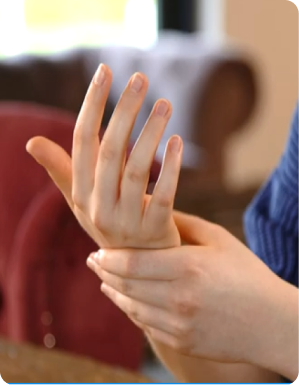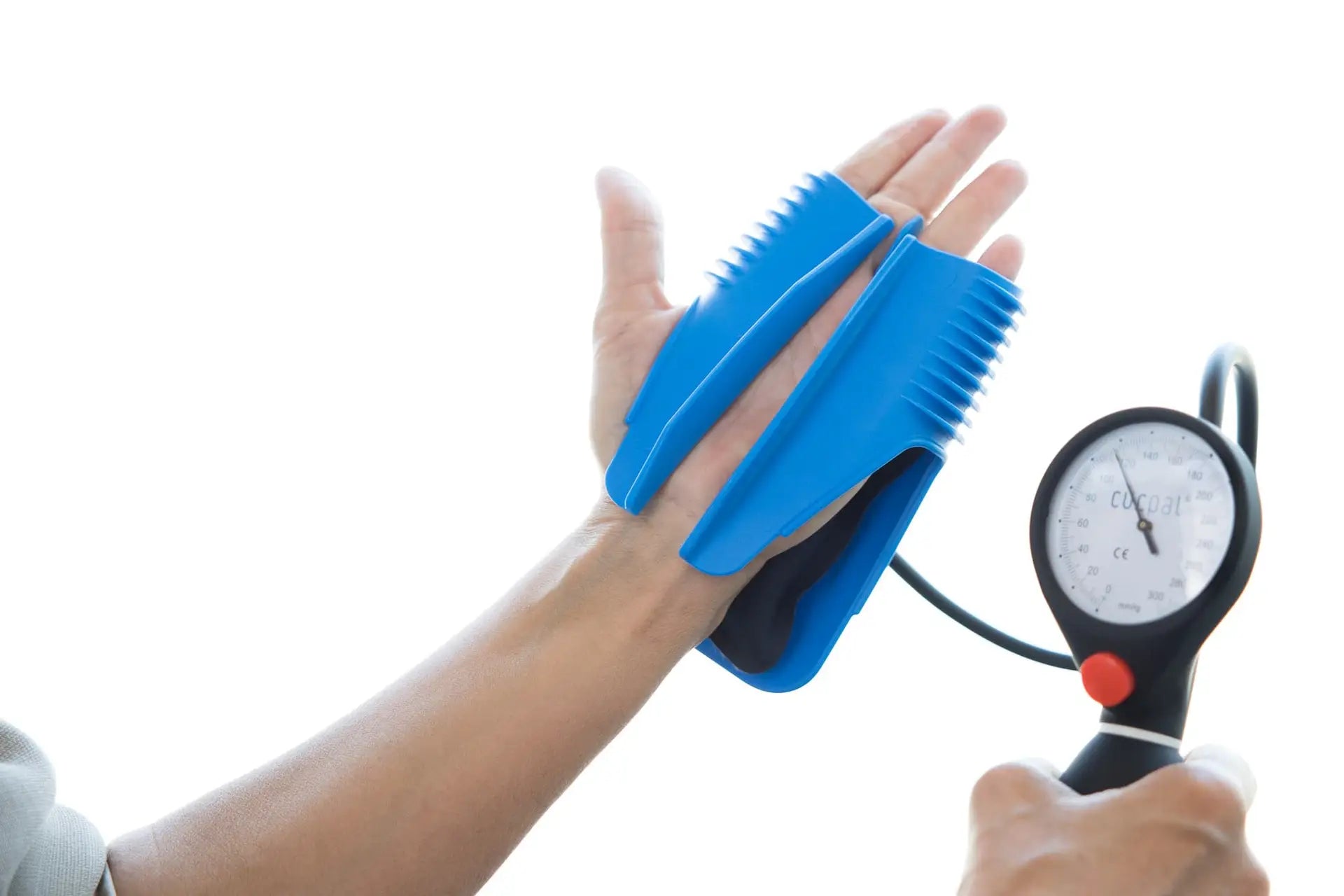Are women more open to alternative treatment methods for chronic illnesses than men? This question can hardly be answered in principle. However, this seems to be the case with the treatment of carpal tunnel syndrome with curpal®. Interested in a small discovery?
Since 2017, patients have been able to treat their carpal tunnel syndrome with curpal® manually and therefore without surgery. curpal® is a cuff that is used to mechanically widen the carpal tunnel.
In many cases, the pain quickly disappears with the help of this stretching. A customer survey now shows: curpal® seems to work better for women than for men. In our search for the reason, we made a surprising discovery.

Carpal tunnel syndrome mainly affects women
In fact, women are affected by this painful condition around five times more often than men. The reason for this is that women's tissue becomes softer with age and exerts pressure on the carpal tunnel. This pressure pinches the median nerve, the cause of the pain.
The pain usually occurs at night, especially at the beginning of carpal tunnel syndrome. This is why it is so important to consult a doctor at the first sign of pain in the hand and arm or if your hands fall asleep and your fingers tingle at night. The earlier carpal tunnel syndrome is treated, the better the chances of rapid symptom relief. But what about alternative treatment methods?
The independent experience report from focus.online.
Very few doctors know about curpal®
For many patients, and especially for many female patients, the trip to the doctor ends in disappointment. Unfortunately, very few doctors are familiar with curpal®. And unaware of this alternative treatment method, they naturally recommend the traditional route.
The conventional treatment for carpal tunnel syndrome consists of first immobilizing the hand at night. This is achieved by applying a so-called night splint.
However, in very few cases can this immobilization stop the progression of carpal tunnel syndrome. This is because the splint prevents the typical bending of the hand at night. However, the actual cause, the narrowed carpal tunnel, remains untreated with the conventional method.
This is also the reason why the majority of all carpal tunnel patients still end up under the knife sooner or later. Mind you, this is not due to a lack of alternative treatment methods for carpal tunnel syndrome, but solely because doctors are unaware of or do not recommend alternative treatment methods such as mechanical stretching.
However, it is not without risk if patients constantly immobilize their hand with a splint and even wear the night splint during the day, which is often recommended. These patients run the risk of their wrist becoming stiff. After all, the actual function of the wrist is movement!
Alternative treatment for carpal tunnel syndrome with curpal®
If you compare the effect of curpal® with the effect of the night splint, you quickly recognize the strength of this alternative treatment method.
Unlike the splint, curpal® does not immobilize the wrist. Instead, curpal® is a cuff that stretches the hand and thus widens the carpal tunnel. The result is that the pinched nerve is given more space again and the pain can subside.
The same effect can also be achieved by surgery. The aim of surgery is also to create space for the nerve again. The only difference is that during surgery, the carpal tunnel is opened through an incision. However, this procedure can lead to postoperative complications.
These complications include severe scarring, which can be associated with increased pain or reduced mobility and strength in the thumb and fingers.
Does curpal® work better for women than for men?
A patient survey commissioned by the manufacturer of curpal®, curmed GmbH, in summer 2017 showed that curpal® appears to work better in women than in men.
A total of 200 patients were surveyed. In the survey, around 83% of women stated that they were very satisfied to satisfied with the success of curpal®. In contrast, only around half of the men confirmed this satisfaction. So curpal® seemed to work well for 83 percent of women, whereas it apparently had less of an effect on men. But where did these differences come from?
The first hypothesis was that the difference lies in the different tissue structure of women and men. Carpal tunnel syndrome usually affects women after the menopause. During this time, women's connective tissue generally becomes softer.
Softer tissue makes them more susceptible to carpal tunnel syndrome, but it is also easier to stretch. At first glance, the hypothesis seemed plausible: softer tissue could be the reason for the better treatment success in women.
Alternative treatment for carpal tunnel syndrome: Patience pays off
At second glance, however, there was another reason for the greater treatment success of the alternative treatment method among the women surveyed.
When the patients were asked about the length and frequency of application, most women reported a real "application routine".
Almost without exception, the women reported that they applied the cuff several times a day, often at very specific times. Many women even described how they used the device every evening in front of the television.
This resulted in frequent and very regular use by women. The men in the survey did not describe this routine use. On the contrary: if success was not achieved very quickly, many men lost interest in further treatment with the alternative method and considered surgery to be the better solution.
Alternative treatment for carpal tunnel syndrome? Many women seem to have more patience.
In our survey, most women reported a real "application routine" for the alternative treatment of their carpal tunnel syndrome with curpal®.
This suggests that women were apparently more patient and consistent in their use. While men were often not prepared to invest the time required for daily use over a longer period of time and were more quickly disappointed if the hoped-for results did not materialize within days, women proved to be more patient and consistent in their use.
With curpal® this patience pays off.







Leave a comment
This site is protected by hCaptcha and the hCaptcha Privacy Policy and Terms of Service apply.